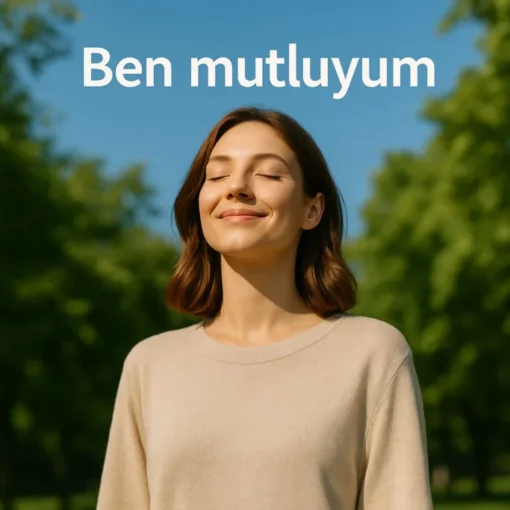A yes/no question in Turkish
A yes/no question is a type of question that does not require a specific answer — it can be answered only with “Yes” or “No.”
Yes/no questions in Turkish can be in affirmative form (affirmative-interrogative sentences) or in negative form (negative-interrogative sentences).
To form a yes/no question, you need to use the special question particle “mı” (or its variants “mi”, “mu”, “mü” depending on vowel harmony).
Bu bir kitap. – This is a book.
Bu bir kitap mı? – Is this a book?
Bu bir kalem. – This is a pen.
Bu bir kalem mi? – Is this a pen?
Depending on the last vowel in the word, the question particle changes to “mi“, “mı“, “mu“, or “mü” in accordance with the major vowel harmony.
That is:
If the last vowel is a or ı, the particle will be mı
If it’s e or i, use mi
If it’s o or u, use mu
If it’s ö or ü, use mü
a, ı → mı
e, i → mi
o, u → mu
ö, ü → mü
Examples:
Bu bir araba mı? – Is this a car?
Şu bir ev mi? – Is that a house?
Burası İstanbul mu? – Is this Istanbul?
Ali Türk mü? – Is Ali Turkish?
The word “bir” in Turkish is used as an indefinite article
Insert the correct question particle.
Answers and Translation
- Bu bir papağan mı? – Is this a parrot?
- Şu sözlük mü? – Is that a dictionary?
- O elbise mi? – Is that a dress?
- Burası ofis mi? – Is this place an office?
- Orası okul mu? – Is that place a school?
- Bu otobüs mü? – Is this a bus?
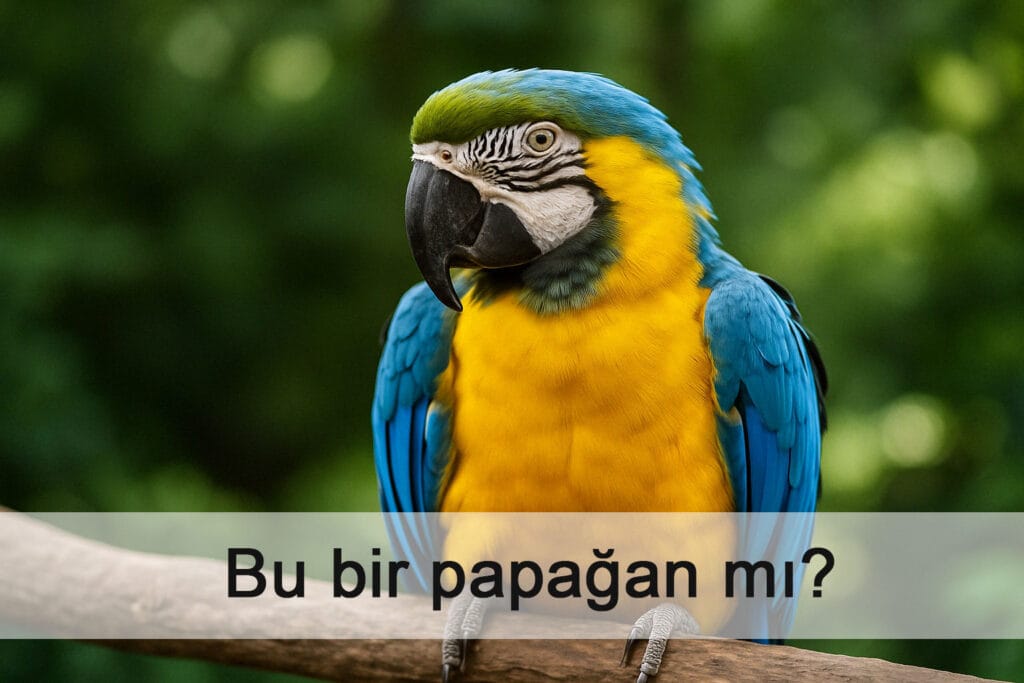
Translate the sentences into Turkish
- Is this Mr. Hakan?
- Is that a bull?
- Is that a mosque over there?
- Is that an airplane?
Translation
- Is this Mr. Hakan? – Bu Hakan Bey mi?
- Is that a bull? – O öküz mü?
- Is that a mosque over there? – Şurası cami mi?
- Is that an airplane? – Şu uçak mı?
The negative form of yes-no questions – “Isn’t it so?” or “Isn’t that right?”
To form negative yes-no questions in Turkish, the word “değil” is used. It functions like the English word “not” to indicate negation.
“Değil” is always placed before the question particle “mı”, and in English, these types of questions are usually translated as “…isn’t it?” or “…right?”.
Examples:
- Bu bir kitap değil mi? – This is a book, isn’t it?
- Bu bir kalem değil mi? – This is a pen, right?
- Bu bir araba değil mi? – This is a car, isn’t it?
- Şu ev değil mi? – That is a house, right?
- Burası İstanbul değil mi? – This is Istanbul, isn’t it?
- Ali Türk değil mi? – Ali is Turkish, isn’t he?
If the answer is affirmative, say: Evet. – Yes.
If the answer is negative, say: Hayır. – No.
Or: Hayır, değil. – No, it’s not.
| Bu bir kitap değil mi? | Isn’t this a book? |
| Evet – Yes | Hayır – No |
| Evet, bu bir kitap. – Yes, this is a book. | Hayır, bu bir kitap değil. – No, this is not a book. |
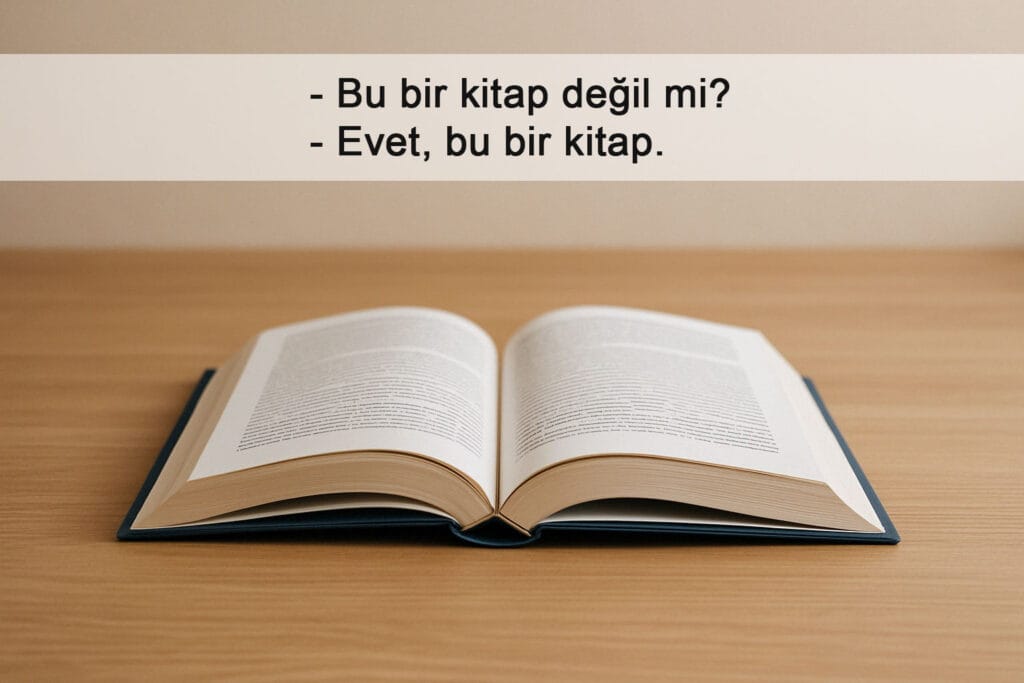
| Şu ev, değil mi? | That’s the house, isn’t it? |
| Evet – Yes | Hayır – No |
| Evet, şu ev. – Yes, that’s the house. | Hayır, şu ev değil. – No, that’s not the house. |

| Burası değil mi? | Isn’t this the place? |
| Evet – yes | Hayır – no |
| Evet, burası – Yes, this is the place | Hayır, burası değil. – No, this is not the place |
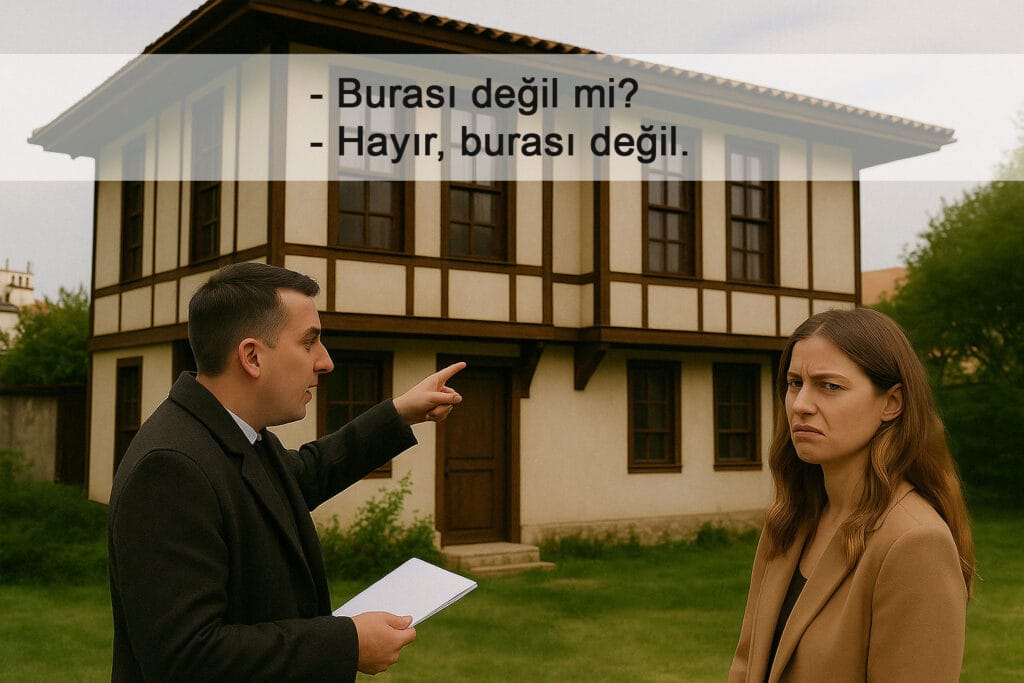
| Şurası değil mi? | Isn’t that the place? |
| Evet – yes | Hayır – no |
| Evet, şurası – Yes, that is the place | Hayır, şurası değil. – No, that is not the place |
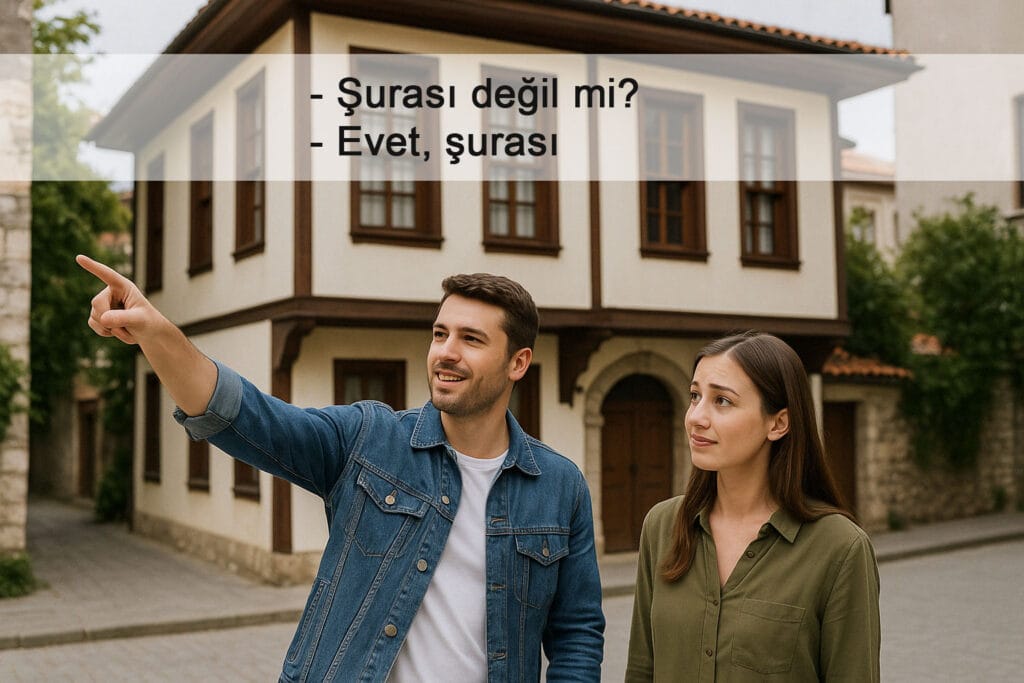
Var and Yok
If you want to ask about the presence or absence of someone or something, Turkish uses the words:
Var – There is, exists
Yok – There isn’t, doesn’t exist
Çay var mı? – Is there tea?
Kitap var mı? – Is there a book?
Çay yok mu? – Isn’t there any tea?
Kitap yok mu? – Isn’t there a book?
Lesson 1
- Alphabet
- New Vocabulary
- Introduction
- Demonstrative Pronouns
- Vowel and Consonant Harmony
- Yes/No Questions
- Exercises
- Dialogue “At the Bazaar”
Discover more from Turkish language
Subscribe to get the latest posts sent to your email.




